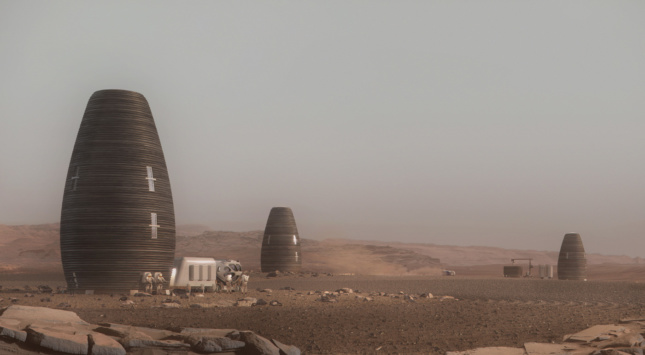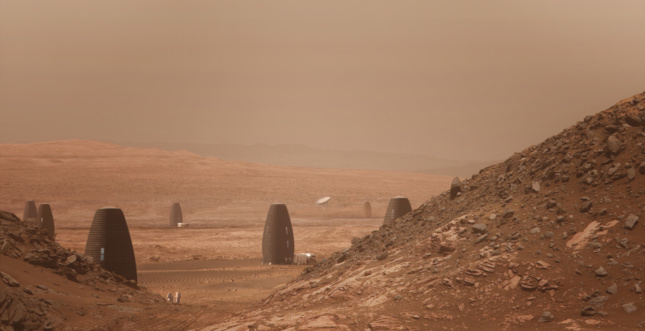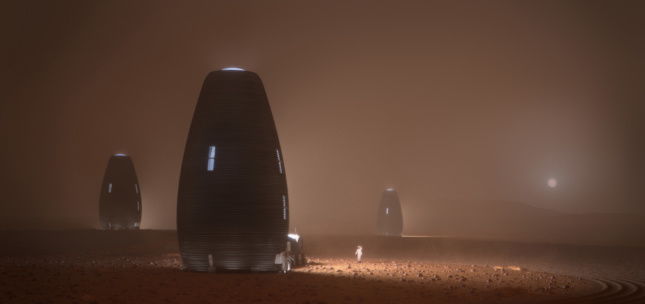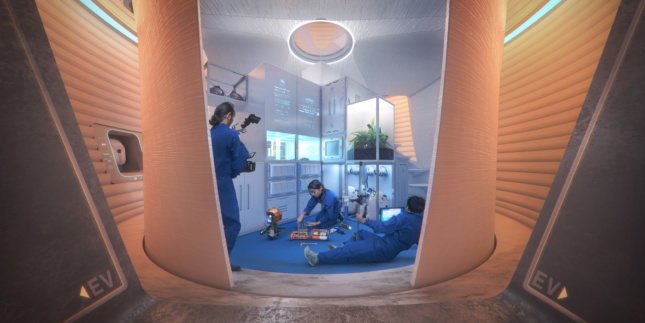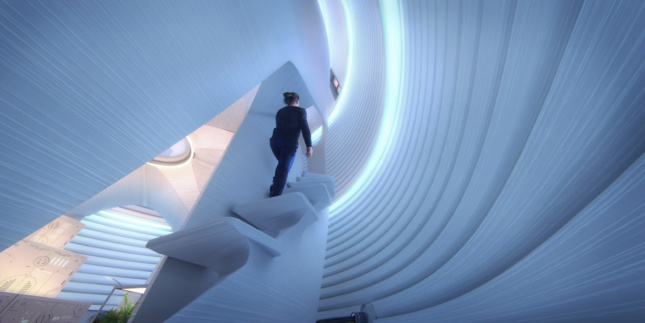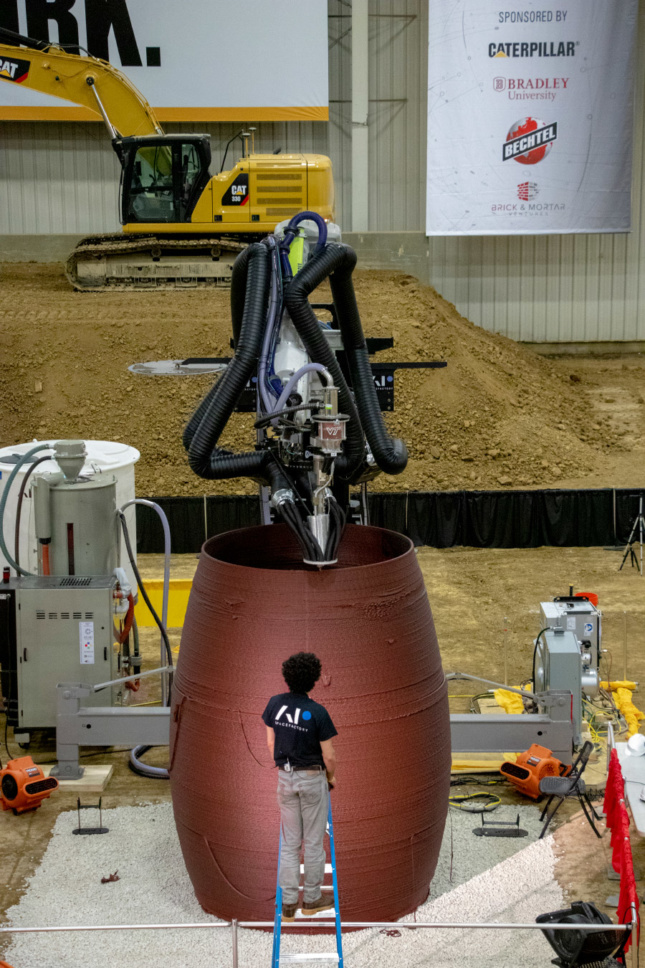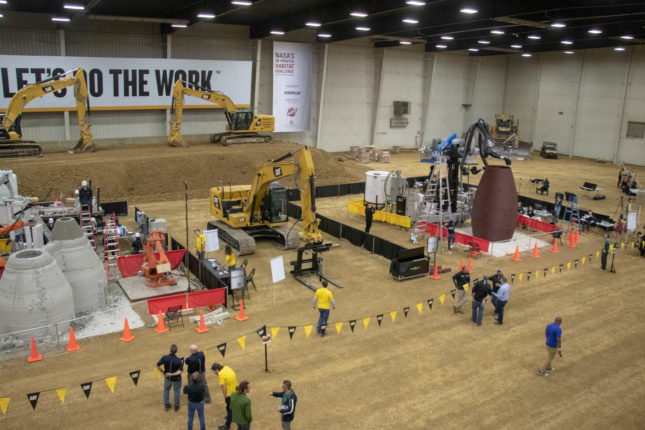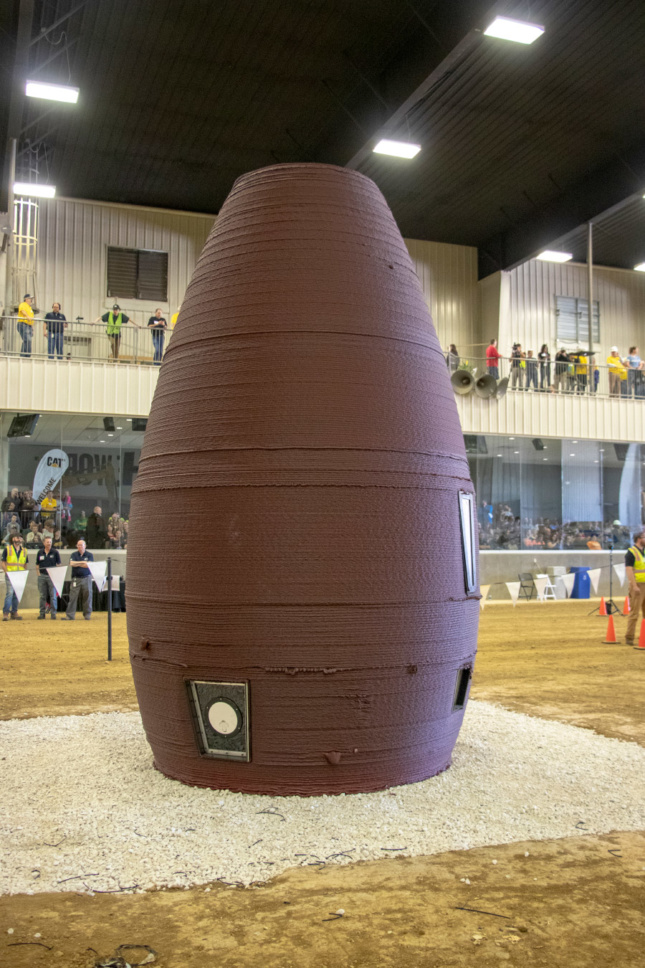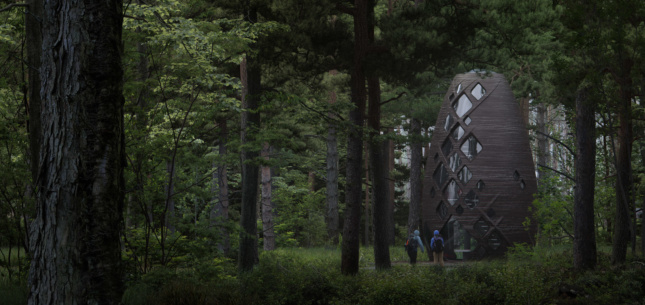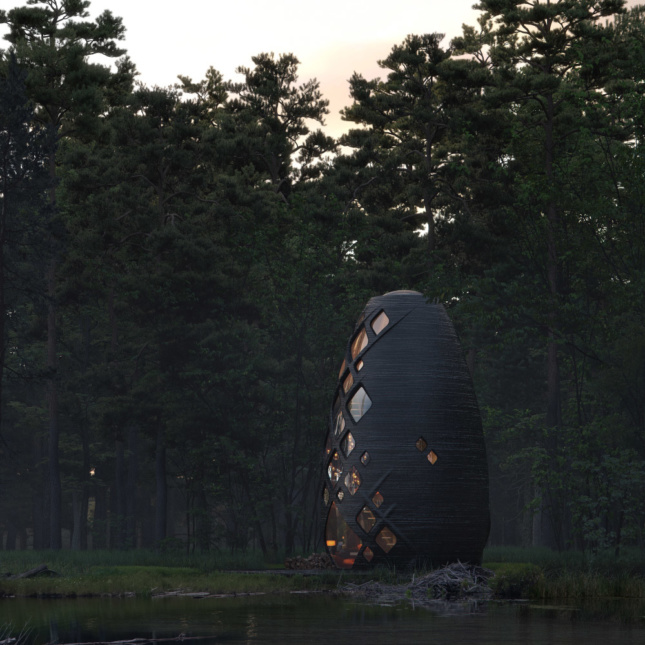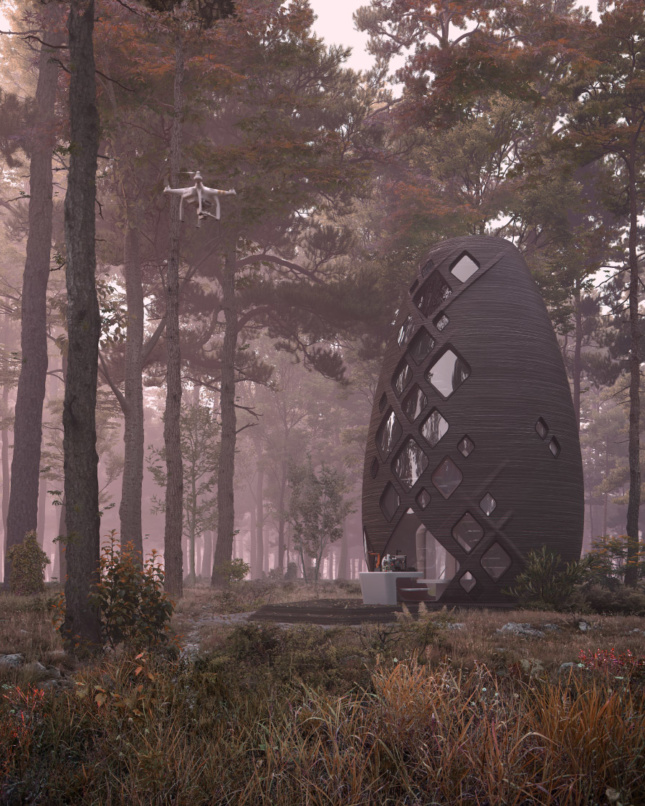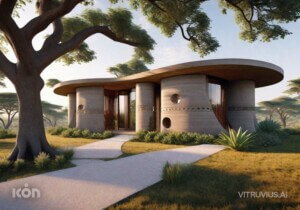After four years, NASA’s 3D-Printed Habitat Challenge culminated at Caterpillar’s Edwards Demonstration & Learning Center in Peoria County, Illinois, on May 4, with the New York–based AI SpaceFactory taking home the $500,000 first place prize.
The competition’s three phases to develop and refine habitats that could be printed from scavenged soil and form a future Martian outpost were subdivided into smaller progressive challenges. The structures would have to be airtight and printed autonomously via drones or another self-deploying mechanism.
New York’s SEarch+ and Apis Cor won first place in the complete virtual construction challenge on March 27, where teams were asked to create full-scale digital renderings of their prospective habitats.
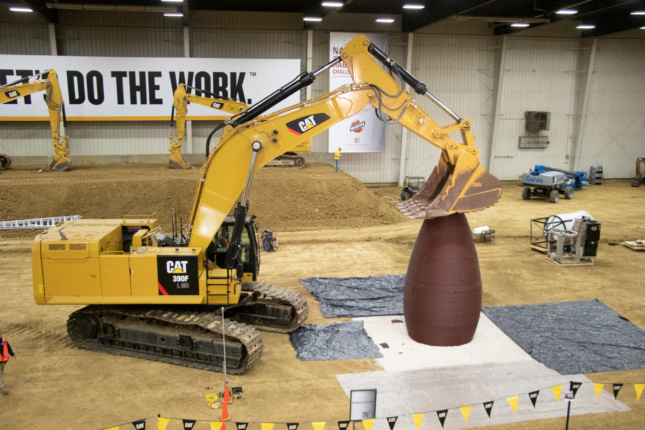
AI SpaceFactory’s hive-like MARSHA habitat took home the top prize at the next challenge—the company 3D printed a one-third scale model of its prototypical dwelling. Over the course of 30 hours, the 15-foot-tall MARSHA was printed from a plant-based biopolymer mixed with basalt strands, a substrate similar to what would be found on Mars. All three of the windows and the ceiling cap were placed via a robotic arm without human interference.
The structure also survived NASA’s crush, impact, and smoke tests better than its competitors. The smoke test is an especially important measure of the habitat’s airtightness, as the fine microparticulate in the Martian environment could damage sensitive equipment and would be difficult to get rid of.
The team from Pennsylvania State University took second place and was awarded $200,000.
While it may be a while before a MARSHA habitat is erected on another planet, AI SpaceFactory wants to translate the use of structures printed from sustainable biomaterials to the Earthbound construction industry. Enter TERA, an adapted version of MARSHA built using recycled materials from the original structure, that AI SpaceFactory wants to build in Upstate New York.
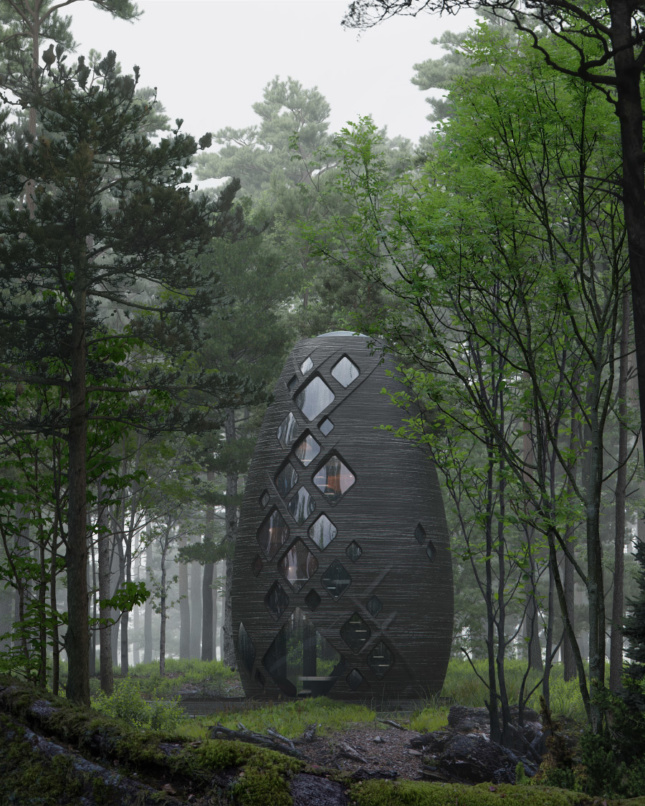
“We developed these technologies for Space, but they have the potential to transform the way we build on Earth,” said David Malott, CEO and founder of AI SpaceFactory, in a press release. “By using natural, biodegradable materials grown from crops, we could eliminate the building industry’s massive waste of unrecyclable concrete and restore our planet.”
The company will launch an Indiegogo campaign to realize TERA later this month, and backers will get an opportunity to stay overnight in the research-structure-slash-sustainable-retreat.






